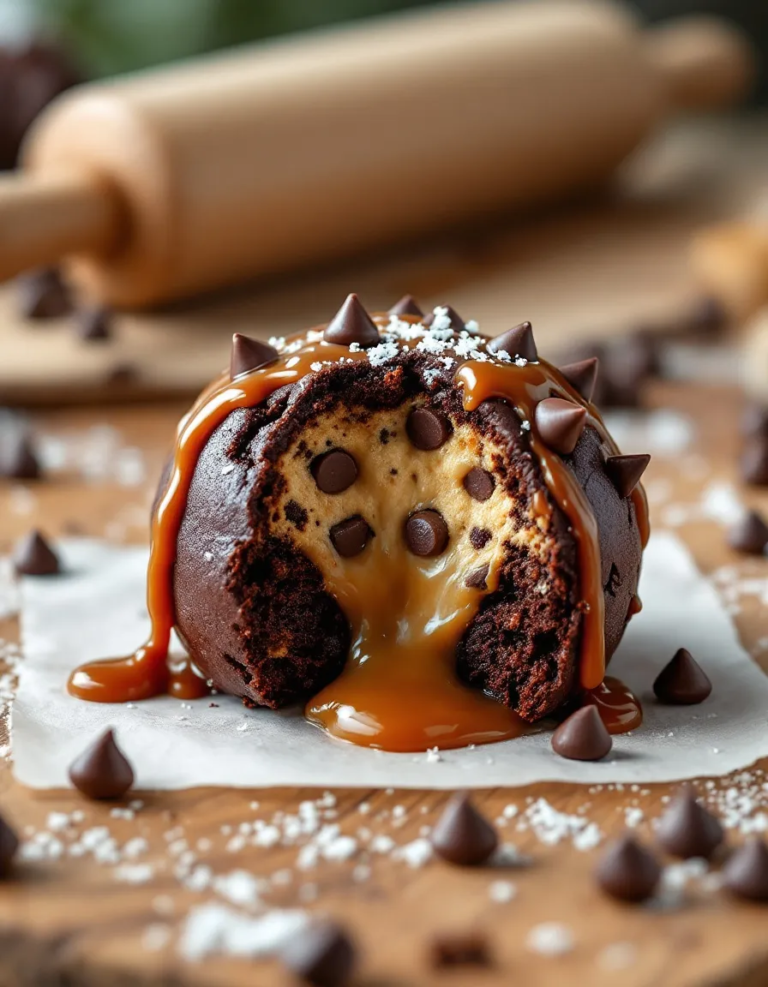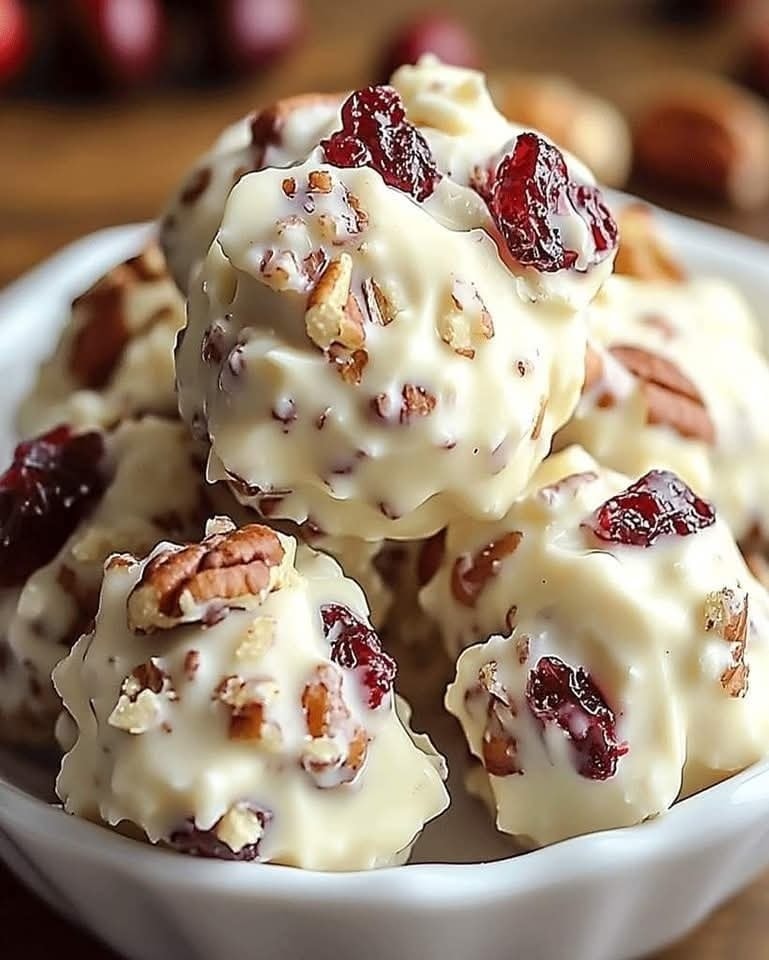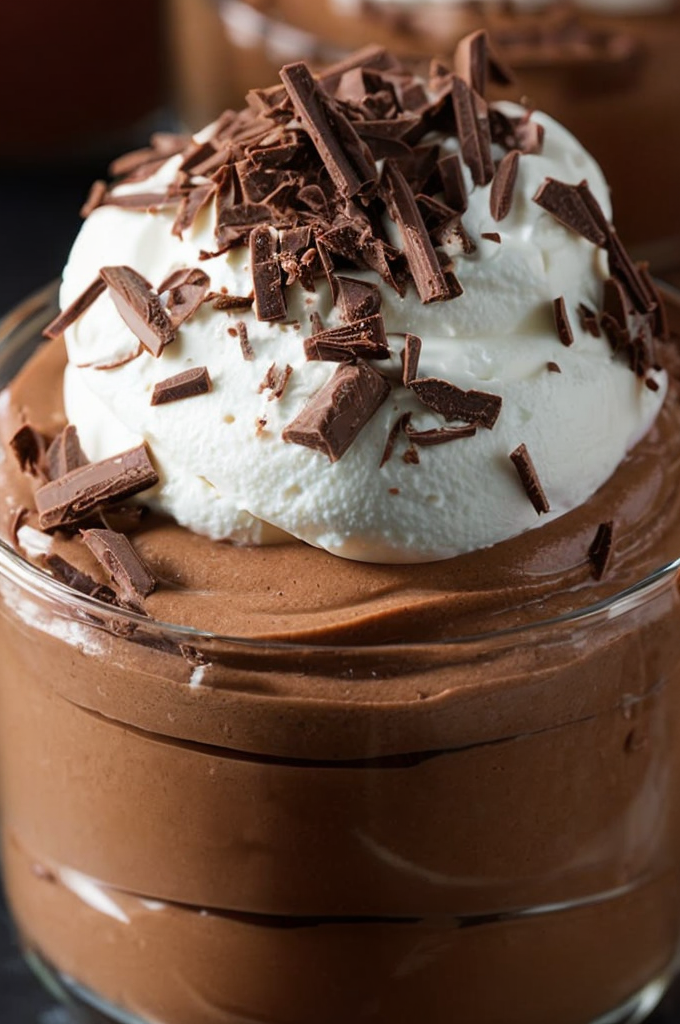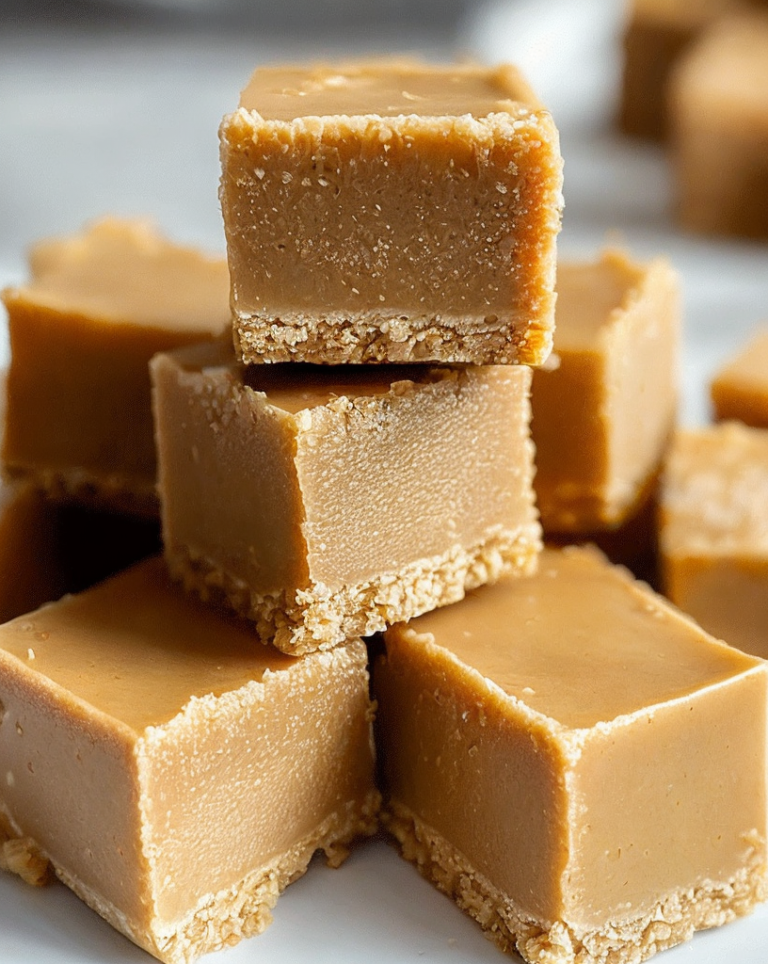Classic Samoa Cookies Recipe – Perfect for Family Dessert
Samoa Cookies: A Delicious Twist on Classic Delight
Imagine biting into a Samoa cookie with its perfect balance of flavors—sweet caramel, rich chocolate, and a hint of toasted coconut. This dessert is not only a treat for your taste buds but also for your eyes. The glossy chocolate drizzle over a golden brown shade of coconut is enough to make anyone drool. Whether you’re a seasoned baker or trying your hand for the first time, this Samoa cookie recipe is sure to become a favorite in your kitchen.
Savor the joys of baking with this homemade Samoa cookies recipe. With its melt-in-the-mouth cookie base, this dessert offers a delightful combination of soft, gooey caramel coated with crunchy toasted coconut. Wrapped up with a drizzle of chocolate, each bite is a symphony of flavors and textures. This recipe is simple yet sophisticated, perfect for family gatherings, holiday evenings, or just a special treat at home.
Quick Recipe Highlights
- Flavor Profile: The Samoa cookies offer a rich, balanced sweetness with creamy caramel, a hint of vanilla, and robust toasted coconut tones balanced by the depth of dark chocolate.
- Texture: Expect a mix of chewiness from the caramel and coconut with a satisfying crunch from the cookie base, topped with a smooth chocolate finish.
- Aroma: As they bake, your kitchen will fill with the inviting scent of sweet caramel mingling with toasted coconut aroma.
- Visual Appeal: These cookies display vibrant browns from the toasted coconuts, highlighted with a luxurious dark chocolate drizzle for an enticing presentation.
- Skill Level Needed: This recipe is suitable for bakers of all levels, with straightforward instructions ensuring delicious results.
- Special Equipment: A stand mixer or electric hand mixer, baking sheets, parchment paper, and a cooling rack will be needed for flawless cookies.
Recipe Overview
- Difficulty Level: While the recipe is straightforward, it requires patience, particularly while melting the caramel without burning it. A medium skill level is ideal.
- Category: Samoa cookies fall under the dessert category, specifically baked goods or indulgent snacks.
- Cuisine: Rooted in American culinary tradition, these cookies are popularized by their association with the Girl Scouts, having a widespread appeal.
- Cost: Samoa cookies are cost-effective, with ingredients such as flour, sugar, and chocolate widely available and affordable.
- Season: These cookies are perfect year-round, though their indulgent nature makes them a winter holiday favorite.
- Occasion: Serve them during festive gatherings, family reunions, or as a sweet companion to your afternoon tea sessions.
Why You’ll Love This Recipe
These Samoa cookies excel in providing a delightful taste and texture that’s both familiar and distinct. The luscious combination of caramel and chocolate offers a hit of sweetness, perfectly offset by the nutty undertones of toasted coconut. Each cookie promises a harmonious blend of flavors that are just right for after-dinner desserts or as a sweet snack during the day.
Apart from their irresistible taste, these cookies are remarkably convenient to prepare. The simple ingredient list, along with clear directions, makes baking them an enjoyable and stress-free experience. They also store well, meaning you can bake them ahead of time for planned occasions without worrying about losing freshness.
Nutritionally, while these are a treat, incorporating them in moderation can be part of a balanced diet. They offer energy-dense fuel that can be ideal for quick bursts of energy during busy days.
Socially, serving these cookies at gatherings is an icebreaker, aiding in conversation and creating a welcoming atmosphere. With their eye-catching appearance, they’re as pleasing to the eye as the palate, sparking instant curiosity and delight among guests.
Cost-wise, baking Samoa cookies at home is very economical, especially when considering the premium prices at bakeries. With pantry staples and high-yield results, this recipe gives you value for money along with premium taste, making them accessible to bakers looking for a rewarding baking adventure.
Historical Background and Cultural Significance
Samoa cookies have an interesting origin, tied closely to the history of Girl Scout cookies in the United States. They first came into the limelight in the mid-1970s, as one of the five initial varieties sold by Girl Scouts. Their unique blend of chocolate, caramel, and coconut has made them a perennial favorite.
Culturally, these cookies hold a special place as iconic treats synonymous with American nostalgia. They have become more than just cookies; they are a part of a cultural movement that supports the entrepreneurial spirit of young girls across America. Year after year, these cookies continue to hold their delectable charm.
Over time, while the basics of the Samoa cookie have remained intact, their adaptations and reinterpretations have evolved. Home bakers and confectionery artists have experimented with the base, flavors, and techniques to create personalized variations that suit local palates and preferences.
While traditionally an American treat, the particular blend of flavors and the allure of chocolate and coconut have broadened, making Samoa cookies appreciated globally. In various regions, subtle changes in ingredients and presentation reflect local tastes, offering unique spins on a beloved classic.
Ingredient Deep Dive
The main components of Samoa cookies include flour, butter, sugar, caramel, coconut, and chocolate. Flour forms the base of any cookie recipe, lending structure. Opt for all-purpose flour for a good balance between airy and dense texture. Store it in a cool, dry place to maintain freshness.
Butter is essential for its flavor and its role in a cookie’s tender crumb. Use unsalted butter to control the salt content in your recipe. When buying butter, look for a fresh, cream-like scent and pale yellow color. Store it in the refrigerator and let it come to room temperature before use to ensure a smooth blend.
Sugar, particularly granulated sugar, is used to sweeten the cookie dough. It also aids in caramelization, providing color and flavor. Keep sugar tightly sealed to prevent moisture absorption that can lead to clumping.
Caramel adds richness and depth. Whether making it from scratch or using ready-made, ensure it’s heated gently to achieve the desired consistency without burning. Coconut, when toasted, brings an aromatic nutty flavor perfect for complementing caramel. Use desiccated coconut for a crisp texture and store it in a cool, dry area to retain freshness.
Chocolate is crucial for the finishing touch, offering that smooth, bittersweet complement to the sweet caramel and coconut. Use good-quality dark chocolate or semi-sweet chocolate for melting and drizzling. Store chocolate in a cool, dry place away from light to preserve its quality.
Common Mistakes to Avoid
- Avoid over-mixing the dough, which can result in tough cookies. Mix until just combined to keep them tender.
- Ensure caramel doesn’t burn by melting it over low heat. Constant stirring prevents sticking and uneven heating.
- When toasting coconut, keep a close eye to avoid over-browning which introduces a bitter taste.
- Make sure the butter is at room temperature for smooth creaming with sugar, essential for the right texture.
- Don’t skip chilling the dough, as it helps in achieving the perfect shape and prevents spreading during baking.
- Use parchment paper on baking sheets to prevent cookies from sticking and to help with easy removal.
- Ensure chocolate is not overheated when melting; use a double boiler to control the temperature.
- Lack of measuring precision, especially for ingredients like baking powder and sugar, can affect the rise and sweetness of cookies.
Essential Techniques
Mastering the caramel is key to a flawless Samoa cookie. Caramelization provides both flavor and texture, turning sugar into a liquid gold that offers complexity. Melt the caramel slowly over low heat, stirring consistently. This patience ensures smooth, lump-free caramel.
Perfecting the cookie base is crucial. Creaming the butter and sugar properly incorporates air, providing lightness to the dough. Achieve this by beating until the mixture turns pale and fluffy, a process that takes about 2-3 minutes.
Toasting coconut, while sounding simple, requires diligence. Spread shredded coconut evenly on a baking tray, toast at medium heat, and watch closely. Stirring occasionally helps even toasting, leading to a rich nutty flavor and golden color.
Melting the chocolate without burning requires gentle heat. Use a double boiler technique or microwave in short bursts, stirring in between. Properly melted chocolate should be smooth, glossy, and lump-free, ready for drizzling or coating.
Achieving the perfect drizzle technique for the chocolate ensures visual appeal. Use a piping bag or a spoon, allowing the chocolate to flow in controlled streams over the cookies. Practice here enhances the presentation and the aesthetic pleasure of the final cookie.
Pro Tips for Perfect Samoa Cookies
For richer flavor, brown the butter before mixing with sugar—this gives a nutty depth to the cookie base.
Let the caramel cool slightly before use to ensure it thickens adequately, providing the right coating consistency for the coconut.
Use a rolling pin to gently crush coconut flakes for even distribution and bonding with caramel.
Quick freeze the cookies before drizzling chocolate to set the coating quickly and avoid smudging.
Pipe chocolate in steady, swift motions for even, beautiful drizzles.
Experiment with sea salt topping on the chocolate drizzle for a heightened contrast to the sweetness.
Incorporate vanilla bean paste instead of extract for a deeper aromatic hint in your cookies.
Add a hint of ground espresso to your dough for an intriguing flavor twist and enhanced sweetness perception.
Variations and Adaptations
For a regional twist, incorporate macadamia nuts into the coconut layer, bringing a Hawaiian flair to your cookies that adds a unique crunch and richness.
Try a seasonal adaptation by adding spices like cinnamon or nutmeg to the dough during holiday times, enhancing coziness and warmth.
For dietary modifications, create a gluten-free version by substituting almond or oat flour. This change ensures everyone can enjoy these delightful cookies without compromising flavor or texture.
Enhance flavors further by using flavored chocolates such as orange or mint for drizzling over the top. Experimenting with these variations can bring exciting multiple notes to each bite.
To modify textures, try incorporating chewy dried fruits like cranberries or raisins into the coconut mix. This addition creates a chewy texture complementing the crunchy base.
For a more glamorous presentation, coat the entire cookie in chocolate before drizzling, which not only enriches flavor but offers a sophisticated appearance.
Serving and Presentation Guide
For an elegant presentation, serve cookies on a wooden platter lined with parchment for rustic charm, adding whole toasted coconut flakes and chocolate curls as garnish.
Garnishing with edible gold leaf or finely chopped pistachios gives a festive touch and adds an eye-catching element, perfect for special occasions.
For traditional accompaniments, consider pairing with a tropical fruit salad, contrasting the rich, hearty flavors of the cookies with light, fresh fruity notes.
If aiming for modern serving suggestions, artfully stack cookies in a pyramid on a white cake stand during gatherings, boosting visual appeal to entice guests.
Temperature considerations play a role; serve slightly chilled for a firmer bite, which contrasts beautifully with a warm cup of coffee or tea.
Portion control tips include serving cookies as bite-size delights by reducing their size and making them perfect for larger gatherings, offering guests an enjoyable treat without overwhelming.
Wine and Beverage Pairing
Pair your Samoa cookies with a sweet dessert wine like a Sauternes or a late-harvest Riesling. The wine’s sweet and fruity notes complement the caramel and chocolate richness.
For non-alcoholic alternatives, try a robust coffee, preferably dark roast, which offers a bitterness contrast to the cookies’ sweetness, highlighting each flavor note.
When serving tea, go for a fragrant Earl Grey or a Chai blend; their aromatic tannins and spices create an interesting layer to further enjoy the cookies.
Consider temperature—serve beverages slightly above room temperature to maintain their aromatic qualities without clashing with the flavors.
Creating serving suggestions like offering small samples paired directly with small espresso cups or wine glasses can be a delightful tasting experience.
Storage and Shelf Life
Store Samoa cookies in airtight containers, preferably with parchment between layers to help retain freshness and prevent sticking.
Always keep them in a cool, dry location, away from humidity or direct sunlight, to maintain their texture and flavor for up to two weeks.
For longer-term storage, the cookies can be refrigerated. Place in airtight containers to prevent moisture loss and retain the crispness of the base.
Signs of spoilage include staleness or sogginess in texture and any off-odor indicating spoilage. Discard them if these signs are evident to avoid consuming compromised cookies.
Reheating cookies before serving can be done at a low preheated oven or microwave briefly. This restores freshness akin to being freshly baked.
Freezing guidelines include wrapping in pairs with plastic wrap inside a freezer-safe bag. Defrost by transferring them to the fridge a day before needed, ensuring they are served at near-fresh quality.
Make Ahead Strategies
Prepare dough a day in advance and refrigerate wrapped tightly, allowing flavors to meld and simplifying day-of baking preparation.
Store each element separately if baking in stages: keep toasted coconut and melted chocolate prepared separately in fridge compartments.
Assess the quality impact when freezing them, as freezing too far in advance might alter textures slightly. Store no longer than six months.
Assemble cookies in the morning of your event to ensure optimal freshness and crunchiness when served.
Reheat cookies carefully using low microwave power settings or a slow oven heat-up, preventing overcooking of toppings.
Consider adding freshly toasted coconut or a quick drizzle increase in chocolate for a fresh look when serving after storage.
Scaling Instructions
For halving the recipe, carefully measure half the ingredients, adjusting methods for melting and baking specifics to ensure consistency.
Doubling or tripling requires larger mixing bowls and additional baking sheets for more efficient batch production without overcrowding.
Timing modifications might be needed for larger batches to ensure even baking, possibly adjusting baking time or temperature slightly.
Storing considerations remain important; use multiple, smaller containers to keep flavors consistent and cookies fresh when scaling up or down.
When scaling up, consider equipment like stand mixer capacity and additional oven racks to keep preparation time efficient and unified.
Nutritional Deep Dive
Understanding the macro breakdown of Samoa cookies highlights their carbohydrate richness due to sugar and flour content, offering energy density for part-day consumption.
Micronutrients like iron and magnesium from cocoa and coconut provide additional health benefits in moderation, akin to a balanced indulgence.
Health benefits include quick energy sources for on-the-go lifestyles when consumed in suitable portions without excess.
Dietary considerations may require sugar alternatives or smaller portion consumption for those managing calorie intake due to high sugar presence.
Portion analysis reveals serving sizes around 1-2 cookies, satisfying sweet cravings without going overboard into excessive calorie intake.
Weight management tips include pairing Soma cookies with high-fiber snacks or fruits for a wholesome nutritional profile without excessive sugar spikes.
Dietary Adaptations
For a gluten-free version, switch all-purpose flour with a gluten-free alternative like almond or oat flour, ensuring the dough retains structure.
Create a dairy-free version by replacing butter with a plant-based equal or coconut oil; use dairy-free chocolate for the drizzle.
For vegan adaptations, utilize both dairy-free and egg-free substitutes such as aquafaba for egg replacements, maintaining texture and flavor.
Modify to a low-carb recipe using almond meal or coconut flour, mindful of texture changes but achieving similar delightful results.
For keto-friendly Samoa cookies, replace sugars with erythritol-based sweeteners, and use almond flour for lower carbs, adhering to dietary norms.
A Paleo option includes using natural sweeteners like honey or maple syrup and almond or cassava flour, combining both tradition and diet-consciousness.
Low-FODMAP versions use specific sugars that don’t trigger sensitivities, ensuring people with dietary restrictions can enjoy this indulgence.
The Recipe
Samoa Cookies
Serves: 24 cookies
Prep Time: 30 mins
Cook Time: 20 mins
Total Time: 50 mins
Kitchen Equipment Needed
- Stand mixer or electric hand mixer
- Baking sheets
- Parchment paper
- Cooling rack
- Microwave-safe bowl or double boiler
Ingredients
- 1 cup all-purpose flour
- 1/2 cup unsalted butter, softened
- 1/3 cup granulated sugar
- 1 cup sweetened shredded coconut
- 1 cup soft caramels
- 1/2 cup dark chocolate, melted
- 1/4 tsp vanilla extract
Directions
- Preheat the oven to 350°F (175°C) and line baking sheets with parchment paper.
- In a stand mixer, beat softened butter and sugar until creamy.
- Gradually add flour and vanilla, mixing until a dough forms.
- Roll dough to 1/4-inch thickness, cut into circles, and place on baking sheets.
- Bake for 10-12 minutes or until edges are lightly golden. Cool on racks.
- In a pan, toast coconut until lightly browned, stirring frequently.
- In a microwave-safe bowl, melt caramels according to packet instructions.
- Mix melted caramel with toasted coconut, spreading over each cookie.
- Melt dark chocolate, drizzle over cookies, and allow to set before serving.
Recipe Notes
- Ensure cookies cool completely before adding caramel to maintain structure.
- Store in airtight containers to retain freshness.
- Experiment with additional toppings like chopped nuts for extra flavor.
Troubleshooting Guide
Feeling that your cookies lack desired texture can be due to dough overmixing, so always mix until just combined to maintain structure.
Unbalanced flavors may emerge if ingredient proportions are off, making scale precision vital for harmonious results.
Avoid temperature issues by preheating ovens fully and aligning baking times to cookie size for even results.
Equipment challenges, such as a lack of specific tools like mixers, might result in prolonged preparation; substitute with manual tools like pastry cutters.
Ingredient substitutions like butter for margarine can noticeably change texture and taste; always consider flavor density and moisture content.
Timing concerns emerge when cookies brown too soon—lower the oven shelf or reduce baking time as needed to correct these variables.
Recipe Success Stories
Bakers worldwide share their joy of creating Samoa cookies, with community feedback often praising their easy-to-follow nature and rewarding flavors. Some have taken liberties with adaptations, finding success by incorporating different fruits or going gluten-free.
Variations such as zesty lime coconut versions or added spices like cardamom in the dough offer distinct tastes without deterring from the classic appeal.
Reader suggestions encourage the use of alternative sweeteners or inclusive baking options, giving creative freedom to adapt the recipe for dietary preferences.
Photography tips from passionate cooks often highlight staging cookies against contrasting wooden surfaces for a rustic look, driving curiosity and visual engagement.
Frequently Asked Questions
Can I use store-bought caramel sauce?
While making caramel from scratch provides a fresh depth of flavor, store-bought caramel sauce is a convenient alternative. Ensure it is slightly warmed before use to make application on the cookies easier.
What is the best way to melt chocolate?
Melting chocolate can be done via microwave using short intervals (15-30 seconds) or using a double boiler to prevent burning. Stir consistently until smooth for the desired drizzling consistency.
How do I prevent cookies from spreading too much?
Refrigerate dough before baking and ensure butter is not too warm for better cookie structure. Parchment-lined trays also aid stability during baking.
What alternative flour can I use for a gluten-free option?
Gluten-free baking flour blends commonly available in supermarkets work well, or almond flour offers a grain-free alternative, although it may impact texture slightly.
How can I store cookies long-term?
For extended storage, freeze portioned cookies in airtight bags and thaw them in the refrigerator before serving. This maintains their freshness and textural integrity.
Can I replace sugar with a healthier option?
Natural sweeteners like coconut sugar or honey can be used, keeping in mind they may alter the flavor profile slightly. Adjust quantities to achieve desired sweetness levels.
How do I know if cookies are evenly baked?
Cookies should have evenly browned edges and firm centers. Rotating the baking sheets halfway through ensures even heat distribution and baking.
Why is my caramel too hard?
Overheating can result in hard caramel. Melting it over low heat and allowing slight cooling before application can provide the right consistency while maintaining softness.
What’s the best way to toast coconut?
Spread coconut flakes thinly on a baking sheet and bake at 350°F (175°C), stirring every 5 minutes until golden. This prevents burning and ensures a crisp, nutty finish.
Can pets have Samoa cookies?
No, due to high sugar content, chocolate presence, and potential allergens like coconut, these cookies should not be fed to pets. Always store them out of reach.
Additional Resources
Beyond this recipe, try exploring other traditional cookie recipes that factor in cultural treasures, providing variety and expanding your dessert repertoire. Resources on caramel-making techniques delve deeper into perfecting these classic flavors essential for even more delicious results.
Ingredient guides focused on coconut’s versatility and benefits facilitate greater understanding of their broader applications. Equipment recommendations can aid efficiency while baking, highlighting investments to enhance your techniques.
Exploring seasonal variations like pumpkin-inspired adaptations in fall or spiced versions during holidays enhances cultural appreciation, tying them into more festive occasions seamlessly.
Join the Conversation
Sharing your own culinary adventures on social media connects you with a like-minded community eager to see fresh takes on classic recipes. Engage by offering feedback or posting breathtaking photos of your creations, leveraging photography tips that showcase textures.
Your recipe reviews stimulate conversation, creating discussions that foster collective improvement or adaptation, benefiting others in trying out fresh methods or new ingredient combinations.
Exploring these beloved Samoa cookies provides a platform for creativity and engagement, where each baker becomes part of a larger, supportive network cultivating love for these iconic treats.







